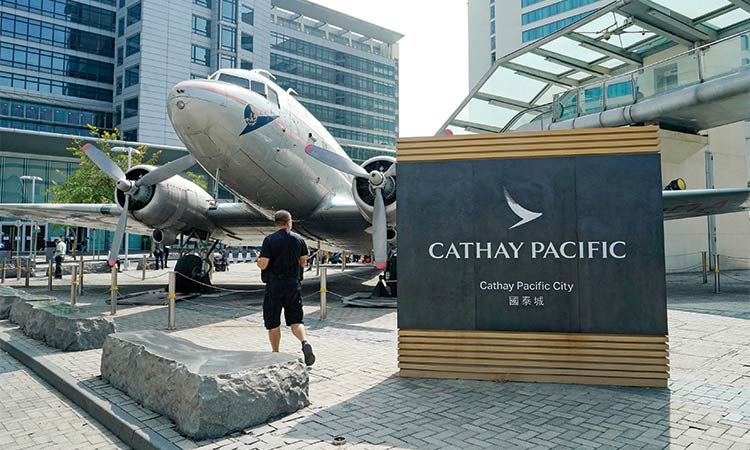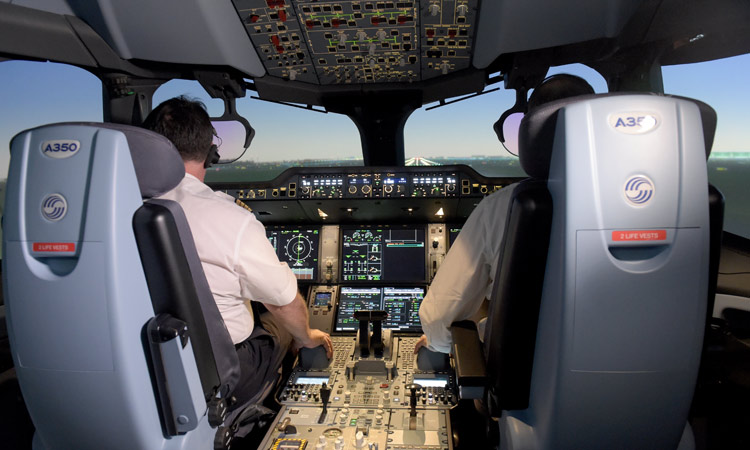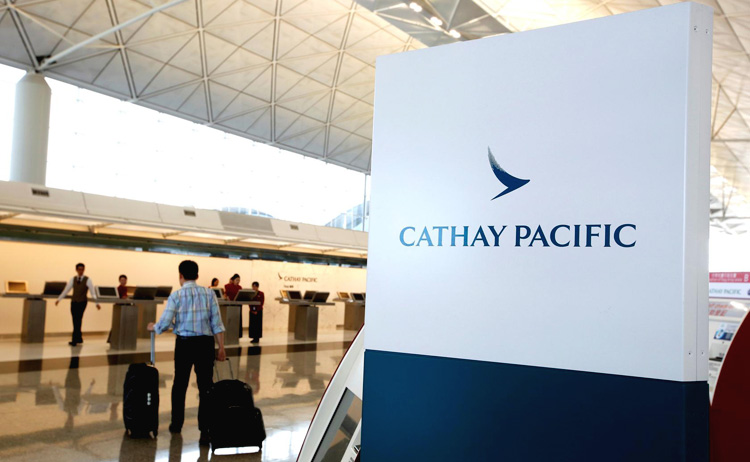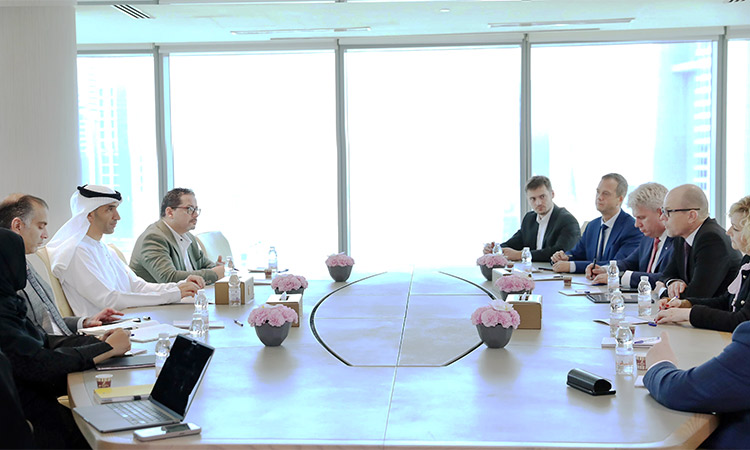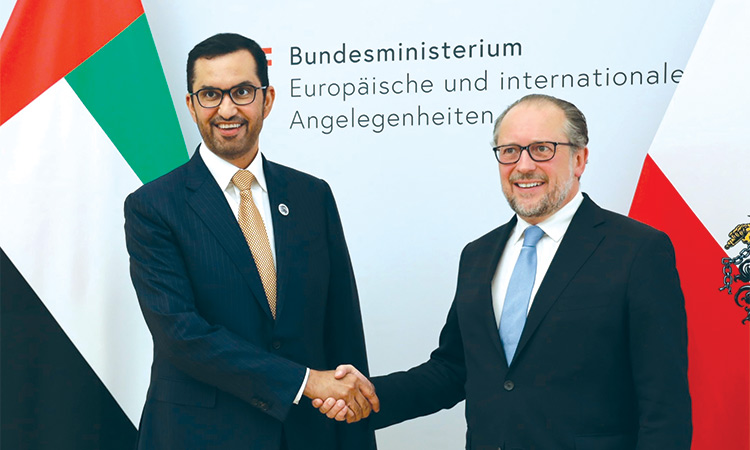Cathay signals rebound from COVID with first profit dividend since 2019
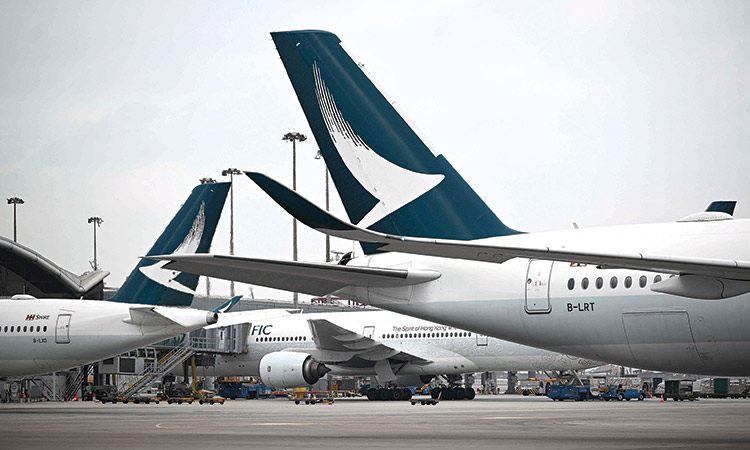
Cathay Pacific aircraft parked at Hong Kong international airport on Wednesday. Agence France-Presse
Cathay Pacific reported its first annual profit in four years as the airline left behind the pandemic-linked restrictions that drove heavy losses and layoffs, pushing its shares to a four-year high.
Hong Kong’s flagship airline said on Wednesday it earned a net profit of HK$9.79 billion ($1.25 billion) in 2023, above the average HK$8.67 billion estimated in an LSEG survey of nine analysts and the highest since the HK$14 billion made in 2010.
Cathay said it would pay its first dividend since 2019, which brokerage Jefferies said was the “key surprise” in the results. The airline also plans to expand its workforce by around 20%, or 5,000 people, this year.
A jump in demand after the lifting of COVID-related travel restrictions contributed to the strong financial performance, Cathay Group Chair Patrick Healy said in a statement. Hong Kong and mainland China lifted global travel curbs in early 2023.
Revenue jumped 85% in 2023 to HK$94.5 billion.
The airline said it aims to reach 80% of its pre-pandemic passenger flights within the second quarter of this year, and 100% by the first quarter of 2025 - three months later than a previously stated target.
Cathay’s shares ended up 5.8%, its highest close in more than four years, outpacing a flat broader market. Shares in Cathay’s largest shareholder, Swire Pacific, closed up more than 3 per cent.
The airline was offered a $5 billion pandemic-related rescue package led by the Hong Kong government in 2020. It intends to repay the remaining half of the government’s preference shares by the end of July.
Cathay had posted a loss of HK$6.6 billion in 2022.
The carrier has restored capacity more slowly than its closest rival, Singapore Airlines, because it faced tighter quarantine rules for longer, and needed to hire more staff to bring back services.
A shortage of staff led the airline to cancel and reduce flights. Cathay executives told a press conference that the days of flight cancellations were over and it would have enough pilots to meet its targets.
While the results indicate how far Cathay has come in its recovery journey, Asia’s aviation industry faces uncertainties as travel conditions normalise and as China’s economy shows no signs of a sustained recovery.
A global imbalance between supply of flights and travel demand last year drove up ticket prices and airline yields.
“We expect this imbalance to diminish and yields to continue to normalise throughout 2024 as airlines around the world continue to add capacity,” Cathay CEO Ronald Lam said.
Singapore Airlines last month also warned that the high yields of the post-pandemic travel boom were being pressured by high fuel prices, inflation, supply chain shortages and increased competition.
Bloomberg News reported last week, citing people familiar with the matter, that Cathay’s second-largest shareholder Air China Ltd had recently consulted with advisers about raising its nearly 30% stake.
Healy, also a director of Swire which holds 45% of Cathay, said Cathay would not comment on speculation, adding Swire had no intention of trimming its stake.
“Swire’s commitment to Cathay remains absolute,” he said.
Cathay reiterated that it is still in the market to order new mid-size wide-body aircraft.
Asked about the scandal-hit aircraft manufacturer Boeing, Cathay’s chief operations and service delivery officer Alex McGowan said the airline’s 777-9 order is due for delivery in late 2025.
“We’ve got full confidence that Boeing are going to resolve their current issues and work on delivering that on time to us,” McGowan said at a press conference.
“We’ve worked very closely... with Boeing for many years. We’re working with them on our existing fleet, the 777-300ER,” he added.
Cathay had earlier vowed to return to 100 percent pre-pandemic passenger flight levels by the end of 2024, but on Wednesday pushed back the target by up to three months.
CEO Lam said that the delay was “mostly a manpower issue” and insisted Cathay was “no slower than our global peers” in rebuilding capacity.
The company said it was working to address the effects of “truly significant” challenges facing the aviation industry, in areas including “recruitment, training and supply chain shortages”.
It added that it planned to expand its workforce this year by around 20 percent, or 5,000 people.
Staff attrition rates have normalised after spiking during the pandemic, Lam told reporters.
Cathay saw a spate of flight cancellations during the Christmas and New Year holidays, which the company attributed to underestimating the pilot levels needed during the seasonal flu peak in Hong Kong.
Agencies

